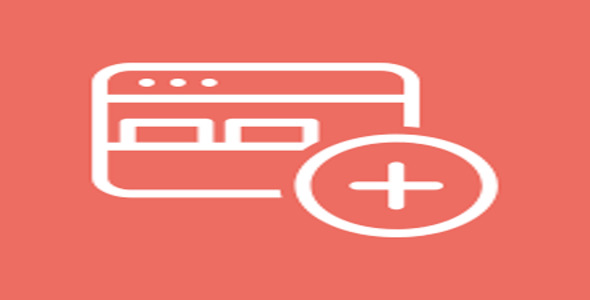Affiliate Area Tabs 1.4

70+ Reviews
with 5 star Ratings

99% Customer
Satisfaction

7-Days
Money Back
Request update for this product.
$149.50 Original price was: $149.50.$2.99Current price is: $2.99.
- Version: 1.4
- Last Updated: 07/11/2024
- License: GPL
- 1 year of updates & unlimited domain usage
- Updates Will Come With A 24-48h Delay
- Original product with the lowest price ever
- Downloaded from original authors
- Instant delivery & fast downloading speed
- 100% clean and tested code
- Get this Product for Free in Membership
Affiliate Area Tabs provide an organized and seamless navigation experience within an affiliate management system. This function, often integrated into popular affiliate marketing platforms like AffiliateWP for WordPress, allows users to customize, add, or remove tabs within the affiliate area. By structuring information with dedicated tabs, affiliates and program administrators can offer a smoother experience for users, which leads to higher engagement and conversions. This article delves into the importance, setup, and optimization of Affiliate Area Tabs, providing insights on best practices for SEO and user engagement.
What Are Affiliate Area Tabs?
Affiliate Area Tabs refer to the separate sections within the affiliate dashboard that categorize different types of information. These tabs may include home, referrals, payouts, campaigns, settings, and any custom information the affiliate program owner wishes to add. They are particularly useful for programs looking to provide clear navigation, improve user experience, and ensure affiliates have quick access to the resources and data they need to promote products effectively.
Tabs are not just a functional element; they enhance the dashboard’s user experience by structuring the content in a way that’s easy to navigate, which is essential for affiliate satisfaction and productivity. Whether affiliates are accessing their referral statistics, reviewing payouts, or updating account information, well-organized tabs can significantly streamline their workflow.
The Benefits of Using Affiliate Area Tabs
- Improved User Experience
With Affiliate Area Tabs, users can locate specific information or tools without the need to sift through a cluttered dashboard. When affiliates can easily navigate between relevant tabs, they’re more likely to engage with the content, leading to increased productivity and satisfaction. - Enhanced Organization
The tabs allow affiliate managers to categorize information logically, making it accessible and actionable for affiliates. This organization prevents data from feeling overwhelming, which is crucial for affiliates who depend on quick insights to optimize their promotional efforts. - Customization Opportunities
Many affiliate programs allow for customization of Affiliate Area Tabs, letting program administrators add, remove, or rename tabs to suit their needs. This flexibility means that companies can tailor their affiliate area based on their unique products, services, and marketing needs. - Increased Conversions
Providing a well-organized, intuitive interface leads to a more positive experience for affiliates. When affiliates can efficiently access the data they need to run campaigns, they’re more likely to convert their audience into paying customers. - Reduced Support Queries
A clear and organized dashboard minimizes confusion, reducing the number of support requests affiliates may have. This, in turn, allows the affiliate management team to allocate resources more effectively toward supporting affiliates with specific needs rather than troubleshooting navigation issues.
How to Set Up and Customize Affiliate Area Tabs
For those using platforms like AffiliateWP on WordPress, setting up Affiliate Area Tabs involves a straightforward process of adding and customizing tabs through plugin settings or custom code. Here’s a step-by-step guide to setting up and optimizing Affiliate Area Tabs:
Step 1: Access the Affiliate Area Settings
To start, navigate to your affiliate plugin settings. In platforms like AffiliateWP, you’ll find a specific settings tab where you can manage the structure of the affiliate dashboard. Depending on the plugin, this might be labeled as “Affiliate Area” or similar terminology.
Step 2: Configure Default Tabs
Most affiliate plugins come with several default tabs, such as “Referrals,” “Statistics,” and “Payouts.” Configure these default tabs to display only the necessary information for your affiliates. For example, if your program emphasizes campaign-specific data, ensure that your “Campaigns” tab is prominently placed.
Step 3: Add Custom Tabs
Custom tabs can provide unique resources, guidelines, or tools that your affiliates might find useful. In AffiliateWP, for instance, you can add new tabs by going to the plugin settings and selecting the option to add custom tabs. Common custom tabs might include:
- Training and Resources: A section with video tutorials, articles, and other resources that help affiliates understand how to promote products effectively.
- Promotional Materials: Dedicated tab for banners, graphics, and links that affiliates can use in their promotions.
- Reports and Insights: An advanced statistics tab that includes detailed reports, helping affiliates analyze their performance and optimize their marketing efforts.
- Support and FAQ: A self-help section where affiliates can find answers to frequently asked questions or reach out for support.
Step 4: Rename or Remove Unnecessary Tabs
A streamlined experience often means removing tabs that aren’t relevant to your affiliates. For example, if your affiliates don’t need to track campaigns individually, removing or renaming this tab can create a cleaner interface.
Step 5: Optimize the Order of Tabs
Position the tabs in a logical order based on the frequency with which affiliates use them. Placing the most accessed tabs (e.g., “Dashboard” or “Referrals”) at the top will make it easier for affiliates to find what they need quickly
You must be logged in to post a review.




Reviews
Clear filtersThere are no reviews yet.